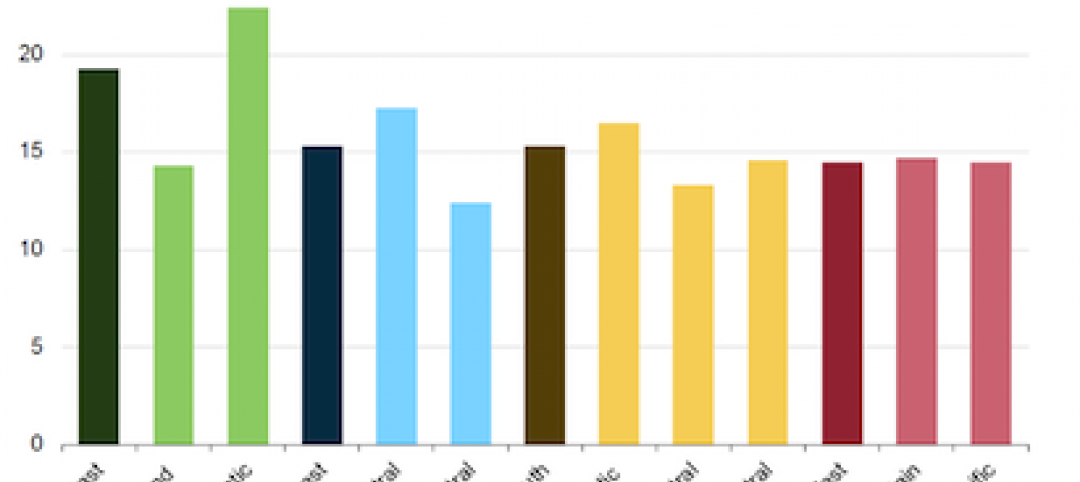The U.S. Green Building Council (USGBC), in partnership with C40 Cities Climate Leadership Group (C40) and the World Green Building Council (WGBC), released a compendium of briefs that showcase the sustainability, building energy use, and climate change policy work of cities across the globe.
Approximately 74 percent of the cities examined are implementing incentives for a greener built environment, 61 percent have enacted municipal green building policies and 49 percent are pursuing sustainable community policies.
“The findings within these briefs indicate that cities are making impressive investments to create more resilient and sustainable built environments, as well as impact the health and wellbeing of their citizens,” said Roger Platt, president of the U.S. Green Building Council. “Many mayors are forging the path toward a more sustainable future, and cities are the lifeblood of policy innovation. The collective impacts and outcomes showcased across these briefs show thoughtful leadership and innovation.”
The research covers an assessment of policies, plans, projects, and programs in 66 C40 cities. Categories include: city-wide sustainability initiatives, private sector green building incentives, green codes, sustainable community development, energy benchmarking, green schools, green affordable housing, and sustainable transportation measures. Additional data points on the uptake of green building certified projects are included where applicable. Collectively, nearly 5,000 projects in these cities have achieved LEED green building certification.
“Building energy use is a leading contributor to urban greenhouse gas emissions and therefore represents one of the greatest opportunities for cities to tackle climate change,” said Mark Watts, executive director of C40. “This report shows that C40 cities, representing 500+ million people and one quarter of the global economy, are taking bold and innovative steps to improve the long-term sustainability of their municipal and private building infrastructure, for the benefit of urban citizens.”
The compendium of briefs can be found at www.usgbc.org/city-market-briefs andhttp://www.c40.org/research.
Related Stories
| Jul 30, 2014
German students design rooftop solar panels that double as housing
Students at the Frankfurt University of Applied Sciences designed a solar panel that can double as living space for the Solar Decathlon Europe.
| Jul 17, 2014
A harmful trade-off many U.S. green buildings make
The Urban Green Council addresses a concern that many "green" buildings in the U.S. have: poor insulation.
| Jul 17, 2014
A high-rise with outdoor, vertical community space? It's possible! [slideshow]
Danish design firm C.F. Møller has developed a novel way to increase community space without compromising privacy or indoor space.
| Jul 11, 2014
Are these LEGO-like blocks the future of construction?
Kite Bricks proposes a more efficient way of building with its newly developed Smart Bricks system.
| Jun 20, 2014
U.S. Energy Information Administration releases preliminary Commercial Buildings Energy Consumption Survey results
Federal survey project shows that commercial-building floorspace has grown 22% since 2003; energy-use data will be released in Spring 2015.
| May 22, 2014
Facebook, Telus push the limits of energy efficiency with new data centers
Building Teams are employing a range of creative solutions—from evaporative cooling to novel hot/cold-aisle configurations to heat recovery schemes—in an effort to slash energy and water demand.
| May 22, 2014
Big Data meets data centers – What the coming DCIM boom means to owners and Building Teams
The demand for sophisticated facility monitoring solutions has spurred a new market segment—data center infrastructure management (DCIM)—that is likely to impact the way data center projects are planned, designed, built, and operated.
| May 20, 2014
Kinetic Architecture: New book explores innovations in active façades
The book, co-authored by Arup's Russell Fortmeyer, illustrates the various ways architects, consultants, and engineers approach energy and comfort by manipulating air, water, and light through the layers of passive and active building envelope systems.
| May 16, 2014
BoA, USGBC to offer $25,000 grants for green affordable housing projects
The Affordable Green Neighborhoods Grant Program will offer 14 grants to developers of affordable housing in North America who are committed to building sustainable communities through the LEED for Neighborhood Development program.
Smart Buildings | Apr 28, 2014
Cities Alive: Arup report examines latest trends in urban green spaces
From vertical farming to glowing trees (yes, glowing trees), Arup engineers imagine the future of green infrastructure in cities across the world.
















